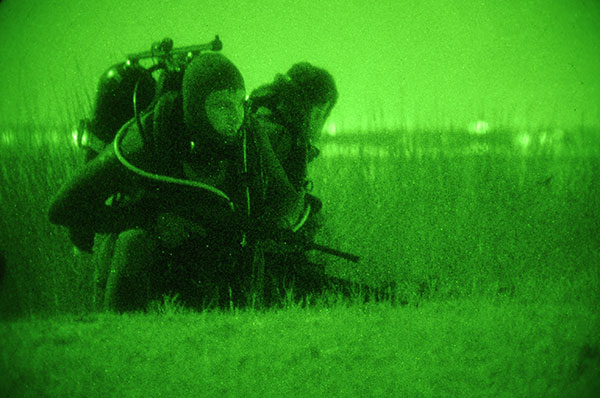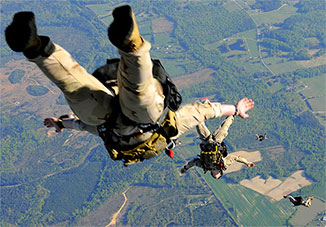Shrouded in darkness and only visible through a night vision camera, Special Forces combat divers with the 7th Special Forces Group (Airborne) pull security after having come ashore during a training mission.
The Green Berets entered the water from a zodiac inflatable then covertly swam in using twin-80 open circuit SCUBA tanks.
The divers would later move inland to conduct close quarters battle (CQB) training.
One of the 6 Operational Detachement-Alphas (ODAs) within each Special Forces Company will be a SCUBA team (also called a Dive team).
SF SCUBA teams specialize in waterborne infiltration methods.
In a real world scenario, a Green Beret combatant diver is more likely to use Draeger LAR-V close-circuit rebreathers than the open-circuit setup pictured here.
Aside from being more bulky and more heavy, open-circuit systems release air into the water when the diver exhales.
This has 2 disadvantages.
The exhaled bubbles can easily be detected and the difference in pressure between the air tanks and the diver's lungs mean that every inhalation slightly increases his bouyancy.
Draeger LAR-Vs also allow the driver to remain submerged for up to 4 hours at a time - much longer than with the Twin-80 system.
The main advatange of open circuit systems is that the diver can operate and greater depths than the LAR-V use, who must keep relatively close to the surface.






